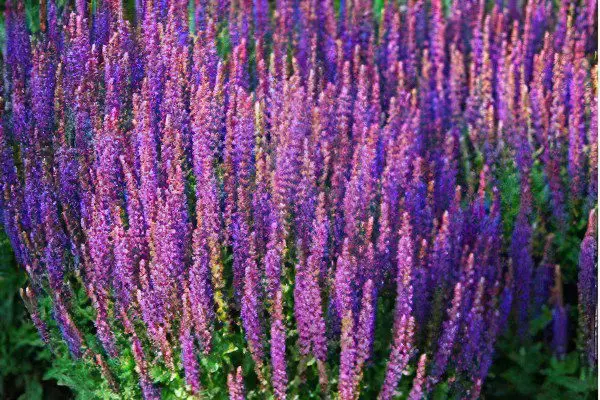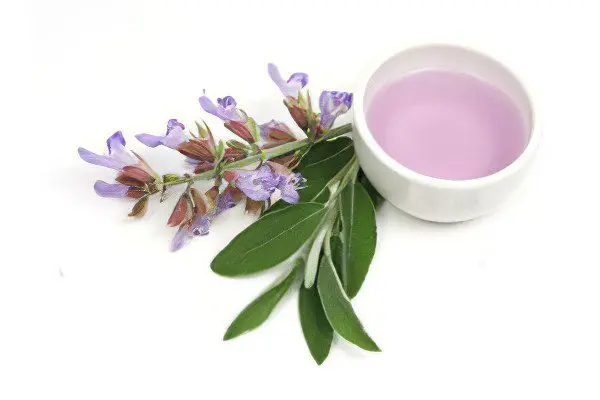Salvia officinalis

Salvia officinalis is a plant that has long been widely used in folk medicine. Sage began its successful march across the planet from the lands of the Mediterranean in ancient times. Greek and Roman physicians were among the first to use the medicinal properties of sage in medicine, as evidenced by their numerous descriptions of the properties of this plant. Sage received the second name “sacred herb” from Hippocrates, who recommended it to everyone for wide use in various fields.
Who ever breathed in this tart aroma will never forget. A real natural healer – sage officinalis – one of the favorite herbs of traditional medicine.
An interesting fact is that sage comes from the Mediterranean – Greece, Spain and Turkey, and spread around the world along trade routes along with merchants. In Renaissance Europe, it was especially popular; many recipes are known from old apothecary books, where sage is the main component.
But do not confuse meadow sage, which is ubiquitous in central Russia and grows in meadows and roadsides, with medicinal sage. These are two different types. Meadow sage is not used in medicine, as it does not have a pronounced therapeutic effect.
Composition and useful properties of sage
Hippocrates also pointed out the beneficial properties of this plant and recommended using it to give strength and prolong youth.
Sage inflorescences and leaves contain 0,3–0,5% essential oil, which contains linalool, acetic acid, aromatic resins, pinene, formic acid, flavonoids, and tannins.
Sage seeds contain about 20% protein and 30% fatty oil, which dries quickly, and sage roots contain coumarin.
The plant has pronounced anti-inflammatory, antimicrobial, hemostatic, tonic properties, and sage is able to increase the secretory activity of the digestive tract, increase the secretion of gastric juice and reduce sweating.
The medicinal properties of this medicinal herb led to its use in the treatment of diseases of the gastrointestinal tract, liver, kidneys, and various viral infections. Salvia officinalis is also well suited for the treatment of sore throats, bronchitis, parotitis, gingivitis, sciatica, polyarthritis, neuritis, diabetes, gynecological and skin diseases, wounds, ulcers, boils, burns, asthma and much more. This list could go on for a very long time.
Medicinal raw materials for sage are the leaves and tops of the plant with flowers.
In folk medicine, this herb is used:

In the fight against lung diseases, including such severe ones as tuberculosis. Due to the mild diuretic and disinfectant effect, sage is used for inflammation of the urinary tract – pyelonephritis, cystitis;
The high content of phytohormones makes sage officinalis a good remedy for healing from diseases of the female genital area. It is prescribed for severe manifestations of menopause (hot flashes, nervousness, sweating). Due to its hemostatic effect, it is used for prolonged and heavy periods;
Sage is part of the chest collections, which are used to relieve cough in bronchitis, pneumonia;
Gastric preparations with this plant help with bloating, have a choleretic effect, stimulate appetite and peristalsis of all parts of the digestive tract;
Externally, sage is used for fungal skin lesions, purulent wounds, psoriasis, burns, frostbite;
Sedentary baths based on a decoction of this plant reduce inflammation and bleeding in hemorrhoids;
Sage is a good immunity stimulant, in addition, it improves memory, enhances attention and increases efficiency.
In cosmetology, sage has also found its use:
For aromatherapy, sage essential oil is mainly used. It is used as a stress reliever, soothing headache, bringing balance and a sense of contentment;
Rinse the hair with a decoction of sage, it gives them shine, eliminates dandruff and oily sheen, stimulates their growth;
Antibacterial properties make this plant an indispensable tool in the treatment of juvenile acne. Salvia officinalis extract is included in many care products for young facial skin prone to oiliness;
A compress of sage decoction on the eye area will help get rid of dark circles and make the look radiant;
Sage essential oil is used in the composition of fragrances in perfumery. In addition, it has the ability to fix other easily degraded essential oils, which allows you to create persistent perfumes, toilet waters and colognes.
[Video] Medicinal properties, use and contraindications of sage:









